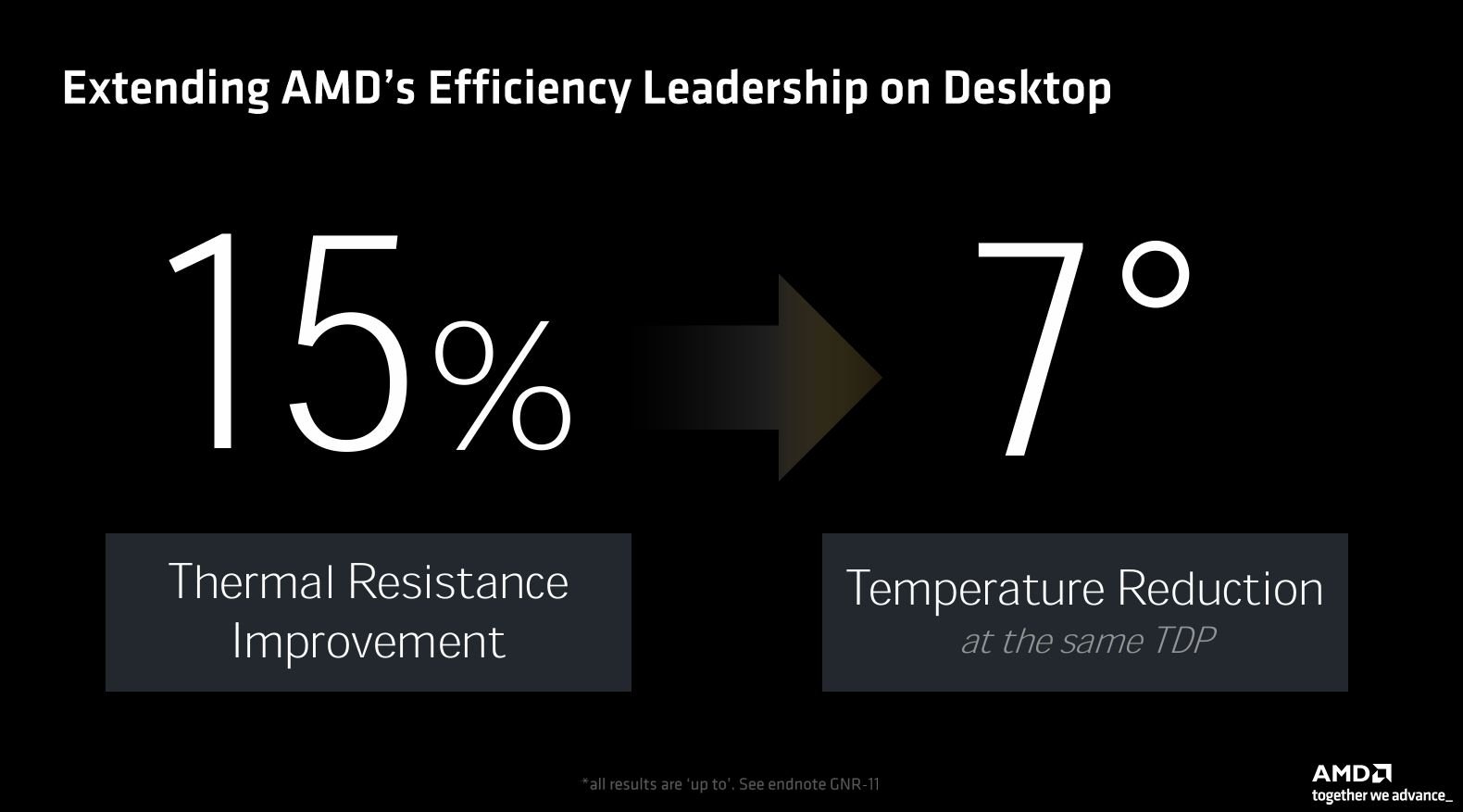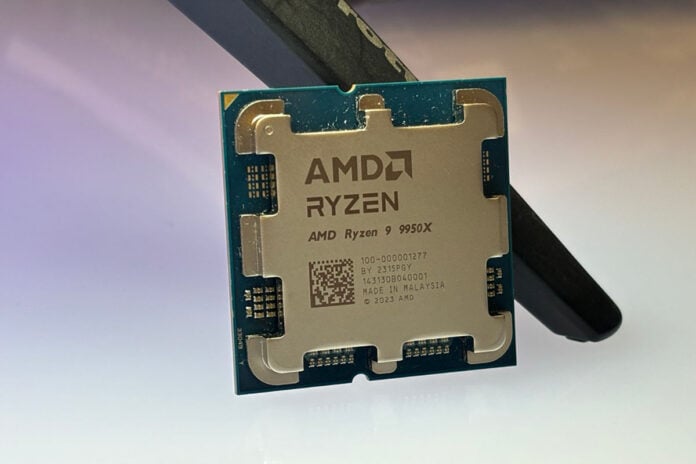The AMD Ryzen 9000 Series CPUs are almost upon us. Announced at Computex and available July 31, 2024, there’s plenty of fascination surrounding the underlying Zen 5 architecture.
Fitting into the same AM5 socket as Zen 4 Ryzen 7000 Series, the quartet represents a drop-in upgrade on existing AM4 platforms. Performance is up across the board, as one would expect, but a welcome addition is AMD paying closer attention to efficiency on the desktop. Let me explain.
AMD’s David McAfee took the stage to reveal more details about what makes Ryzen 9000 Series tick. Outside of the usual gen-on-gen performance improvements that I would expect, what most caught my eye was AMD’s statement regarding 15% greater thermal resistance leading to a significant 7°C temperature reduction at the same TDP.

A lower temperature enables a chip to clock higher, so it’s a win all round. It’s all the more impressive as AMD is using a smaller manufacturing node that necessarily places transistors closer together.
As a primer, Zen 4 uses TSMC’s N5 silicon whereas Zen 5, at least on desktop, leverages N4X for the cores.
We don’t know exactly what AMD has done to accomplish the feat, but we do know Zen 5 features a tweaked layout which minimises localised hotspots that had previously caused overall temperatures to elevate on Zen 4.
Sifting through the accompanying notes reveals AMD compares the Ryzen 9 9950X vs. Ryzen 9 7950X – a fair comparison as both are outfitted with a 170W TDP – and runs Cinebench nT to generate results. Both chips are cooled by an NZXT Kraken X63 AIO, meaning the methodology appears sound.
In my experience, desktop Ryzen chips never ran too warm because their TDPs were remarkably restrained compared to the wattage-guzzling Core i9 competition. Nevertheless, 7°C is a great reduction that ought to enable either more performance or quieter operation, along with better suitability for small-form-factor setups.
We’ll be putting AMD’s assertions to the test in our full review of the Ryzen 9 9950X, coming your way July 31.
Update July 17: we’re trying to find out exactly what AMD has done to reduce temperature by 7°C at the same TDP.

